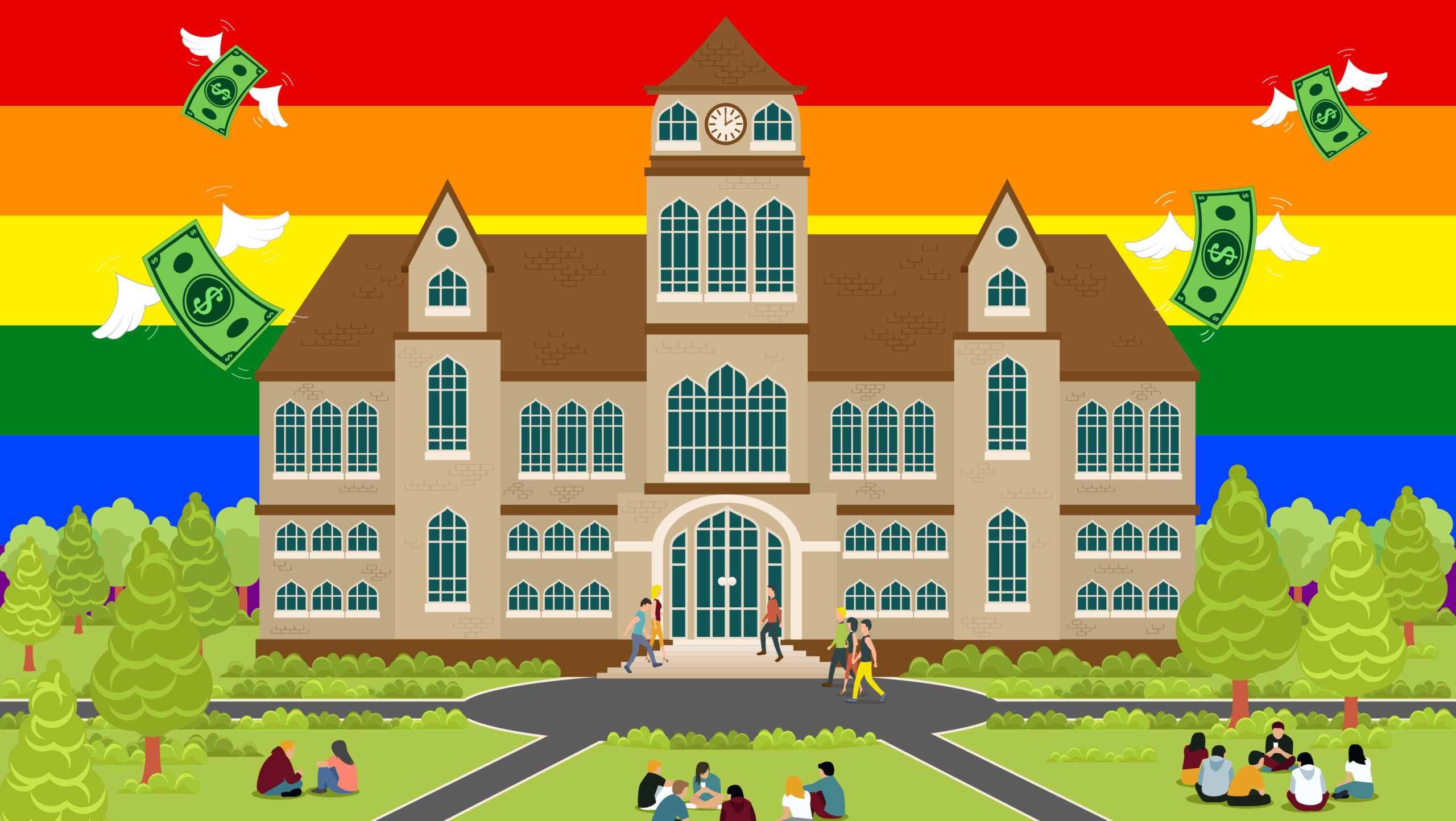It’s hard to forget where you first came out.
I don’t mean online, in the hidden corners of chat rooms and under the cloak of incognito browsing. I mean the real, overwhelming rush that comes from a face-to-face declaration of your sexuality or gender identity — one that you had never made out loud before, maybe even to yourself.
I first came out to a small room of fellow Western University students at the campus’ LGBTQ2 resource group in 2011. My family lived in a Toronto-area suburb and there were more than 200 kilometres that separate us. Emboldened by distance, I gave words to the truth haunting my teenage years.
But as important as the words themselves were the people I spoke them to.
That small group of fresh-faced undergraduates, many of them also growing more confident in their identities, would become my roommates, closest friends and political allies. We became advocates for fairer treatment of queer people on campus, and leaders in our own communities — from planning queer proms for London’s high school students, to starting conversations about STI and HIV testing absent from heteronormative campus clinics.
That group — and all the coalition building, leadership development and counselling that came with it — was funded with fees collected by the university students’ union.
Fees that, in Ontario, are now at risk of running dry.
Last month, Ontario’s Progressive Conservative government announced changes to the Ontario Student Assistance Program (OSAP), reducing the amount of grants available to students and increasing the threshold to qualify for those grants, among others. These changes, released shortly after the reveal of a 10 percent tuition cut, are being hotly debated through editorials, student protests and on social media.
Many are concerned about how the changes will serve lower-income students; after the reduction of OSAP is weighed against the tuition cut, it seems only the wealthiest of students actually benefit.
Yet hidden behind both the tuition and OSAP cuts is another new twist to student fees, one the government is calling the “student choice initiative.” The idea? Let students opt-out of fees “for services they do not use and organizations they do not support,” says Ontario’s Minister of Training, Colleges and Universities Merrilee Fullerton.
It’s unclear how exactly that will play out. Will students see a single “student union” fee to withdraw from? Or will they be able to go through each group or service (LGBTQ2 groups, women’s groups, Indigenous groups and so on), pulling their personal contribution?
What is clear, however, is that services and groups designed to serve minorities on campus will now be controlled by the majority. Students — or, in many cases, the parents paying these student fees — can exert their political will in a more direct way than ever before. Don’t like something the campus newspaper talked about? Pull its funding. Discover that a women’s group is educating students on abortion services? Start an opt-out campaign.
In no other political system in Canada is this kind of carrot-or-stick governing possible. It’s not as though taxpayers who didn’t vote for Premier Doug Ford’s Conservatives can choose to withhold their provincial contributions, unpleased with the government’s approach to daycare or climate change action.
On campus, LGBTQ2 groups will almost certainly suffer. Whether students withhold their funding because of homophobia, because they don’t use the service, or because it’s a way to keep a few more dollars in their already strapped pockets, it’s certain this will have a financial impact on student groups.
When I was an executive with my campus’ LGBTQ2 group, we had a little more than $2,000 to spend on a year’s worth of programming. Most of those funds went to bringing in specially trained counsellors to talk with queer and trans students who felt lost and isolated and who couldn’t access the university’s already backlogged mental health resources. In others words, pennies from each student-at-large were enough to alleviate pressure on the university’s strapped supports and, quite literally, save students’ lives.
Now, I wouldn’t go as far as to say the targeting of post-secondary student services is a specific attack on LGBTQ2 students (student unions against Premier Ford’s government are likelier targets).
But what’s really troubling is that it seems to fit into a larger pattern of turning our collective back on young and vulnerable queer youth — turning their lived experiences and needs into a political opportunity.
In Ontario, Premier Ford’s government is a well-cited example. They’ve scrapped the LGBTQ2-inclusive 2015 sex-ed curriculum, created a snitch line for parents to report teachers talking about queer identities, and cut $15 million from the Trillium Foundation — the funding source for many LGBTQ2 non-profits and campaigns.
But it’s not just an Ontario trend. Last year, British Columbia’s primary and secondary schools were battlegrounds for protests against the province’s new sexual orientation and gender identity (SOGI) curriculum. At the same time, Alberta parents and schools went to court to fight the provincial government’s provisions to protect and support high school gay-straight alliances, battling against an invasive provision that would allow schools to notify parents when or if their children joined a GSA.
So why are schools in Canada such a catalyst for mobilizing anti-LGBTQ2 tensions? Especially considering opposition to other LGBTQ2 national movements — from marriage equality to labour protections — seem to have petered out.
To me, it draws on a long history of underlying homophobic anxieties around queer people and children.
Take, for instance, opponents of the Ontario sex-ed curriculum’s favourite talking point: Benjamin Levin. The former deputy ministry of education in the province, Levin was convicted of creating and possessing child pornography. While Levin had nothing to do with the curriculum’s development or implementation, critics continuously and wrongly suggest that a convicted pedophile was involved in its creation. The case has seized the attention of social conservative pundits and anti–sex ed advocates because it confirms what they’ve always secretly believed: queer people and ideas are perverse and a danger to our children.
It’s the same reason why gay conversion therapy is still legal and accepted around the world, as well as in Canada. Yes, here too. Fuelled by disproven misconceptions and stereotypes around HIV, mental health and gender identity, young queer people in Canada are being kept from information, mentors and peers.
It’s why resources, like LGBTQ2 centres on university campuses, can make such a difference. And the real danger to youth comes from withholding these resources — not from sharing them.
Thanks to organizations like GALE, UNESCO and countless other, we know that LGBTQ2 youth are bullied while attending school at significantly higher rates than their cisgender, straight peers. Dropout rates are higher. Suicide and homelessness numbers are disproportionately larger for LGBTQ2 youth. These queer young people don’t feel comfortable at school, and that ripples throughout their lives. It becomes harder to find a job, a home and a sense of safety.
At the post-secondary level, I hope students opt-in to fund the LGBTQ2 campus groups that provide a feeling of community and safety. But I refuse to put the onus on queer young people to advocate for and protect themselves. Governments at every level — and by extension, the constituents they represent — need to step up and recognize they’re allowing LGBTQ2 youth to be used as fodder in a battle happening in classrooms across the country.
As the late-great Whitney Houston sang, children are our future. If that is the case, then the future of LGBTQ2 rights in Canada is on very shaky ground.


 Why you can trust Xtra
Why you can trust Xtra


